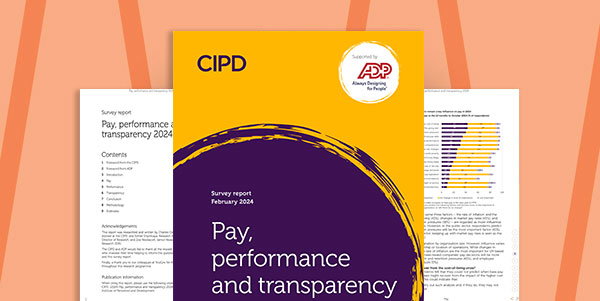The Department for Business and Trade (DBT) published on the 1st of January 2024 its guidance to the changes to the Working Time Regulations following the outcome of the recent consultations on holiday pay and entitlement for irregular hours workers and part-year workers.
The guidance published is split into 6 sections:
1. Introduction
Below are some of the key points from the published guidance, we recommend employers read the guidance in full. It is also worth noting that the following reforms will only apply to leave years beginning on or after the 1st April 2024 from the Working Time Regulations the government introduced on the 1st January 2024:
- introducing a method to calculate statutory holiday entitlement for irregular hours and part-year workers
- introducing a method to work out how much leave an irregular hour or part-year worker has accrued when they take maternity or family-related leave or are off sick
- introducing rolled-up holiday pay as an alternative method to calculate holiday pay for irregular hours workers and part-year workers
For leave years that begin before 1 April 2024, holiday entitlement will continue to be calculated in the same way for irregular hours and part-year workers.
This means if your annual leave year is from January to December, these changes would not apply until 1st January 2025.
Definition of an Irregular Hour Worker and a Part-Year Worker
The guidance published lays out the definition of an irregular hours worker and a part-year worker, this states:
Irregular hours worker
A worker is an irregular hours worker, in relation to a leave year, if the number of paid hours that they will work in each pay period during the term of their contract in that year is, under the terms of their contract, wholly or mostly variable.
Part-year worker
A worker is a part-year worker, in relation to a leave year, if, under the terms of their contract, they are required to work only part of that year and there are periods within that year (during the term of the contract) of at least a week which they are not required to work and for which they are not paid. This includes part-year workers who may have fixed hours, for example, teaching assistants who only work during term time, and who are paid only when working.
Holiday Entitlement for Irregular Hours Workers and Part-Year Workers
Accruing holiday entitlement
For leave years starting on or after 1 April 2024, the government has introduced a new accrual method for irregular hours workers and part-year workers. Holiday entitlement for these workers can be calculated as 12.07% of actual hours worked in a pay period.
The 12.07% is based on the premise that all workers are entitled to 5.6 weeks of leave per annum. This means that a worker’s total working weeks in a year are 46.4 (52 – 5.6 weeks leave).
If a worker is entitled to more than 5.6 weeks of leave, to find the relevant percentage you would need to use the calculation (total holiday entitlement / remaining working weeks in the year) x 100.
Carry Over Leave
An irregular hours worker or part-year worker will be entitled to carry over up to 28 days of leave where the worker is unable to take some or all of their statutory holiday entitlement as a result of being off sick, a period of maternity leave, or other family related leave. The worker would need to use the leave they have carried over within 18 months starting from the end of the leave year in which it accrued.
Leave affected by COVID-19
From 1st January 2024, workers can no longer accrue COVID carryover leave. Workers will be able to use any leave they accrued prior to 1 January 2024 before or on 31st March 2024
Holiday Pay Calculations
A full-year worker is legally entitled to 5.6 weeks of paid statutory holiday entitlement per year.
The government published that they are maintaining the current rates of holiday pay where Regulation 13 leave provides 4 weeks of leave paid at a worker’s ‘normal’ rate of pay and the remaining 1.6 weeks under Regulation 13A paid at ‘basic’ rate.
The government has published definitions for what should be considered ‘normal’ and ‘basic’ rate of pay.
From 1st January 2024, the components that must be included when calculating the ‘normal’ rate of pay are defined in regulations. The guidance states, the following payments must be included in the 4 weeks of normal (Regulation 13 leave) holiday pay:
- Payments, including commission payments, intrinsically linked to the performance of tasks that a worker is contractually obliged to carry out
- Payments relating to professional or personal status relating to the length of service, seniority, or professional qualifications
- Other payments, such as overtime payments, which have been regularly paid to a worker in the 52 weeks preceding the calculation date
The remaining 1.6 weeks’ entitlement can be paid at ‘basic’ rate of pay, that is, the worker’s basic remuneration (as specified by Regulation 13A).
Where leave years begin on or after 1 April 2024, part-year and irregular hour workers are legally entitled up to a maximum amount of 5.6 weeks of paid statutory holiday entitlement per year, calculated according to actual hours worked using the 12.07% accrual method. If the employer chooses to use rolled-up holiday pay, then the entire amount of their leave for irregular hours and part-year workers will be paid at the ‘normal’ rate of pay.
Rolled-up holiday pay
The new regulation has introduced rolled-up holiday pay for leave years beginning on or after 1 April 2024. Rolled-up holiday pay allows employers to calculate and include an additional amount each pay period when a worker gets paid.
This method can only be used for part-year and irregular hour workers and employers should calculate holiday pay based on a worker’s total pay in a pay period based on the appropriate percentage of a worker’s total pay.
Employers will need to check their worker’s contracts and tell their workers if they intend to start using rolled-up holiday pay. This payment should also be clearly labelled on the payslip.
Where employers choose not to use rolled-up holiday pay for irregular-hour and part-year workers, then employers will need to continue to use the existing 52-week reference period to calculate holiday pay for irregular-hour workers, going back up to a maximum of 104 complete weeks.
Rolled-up pay should not be included in the calculation of National Minimum Wage, this is to be paid in addition to the worker’s normal salary, which should be at National Minimum Wage or above.
Where the accrual method is used, the previous 52-week reference period method must be used to look back at the worker's previous 52 paid weeks to calculate what a worker should be paid for a week’s leave.
Full details along with examples can be found in the guidance published.
Additional Resources
For more details, please see https://www.gov.uk/government/publications/simplifying-holiday-entitlement-and-holiday-pay-calculations/holiday-pay-and-entitlement-reforms-from-1-january-2024#additional-resources
The information contained in this article is for general information purposes only. ADP does not provide specific legal, accounting or tax advice to its clients.
Find out about other upcoming changes to Employment Rights here



